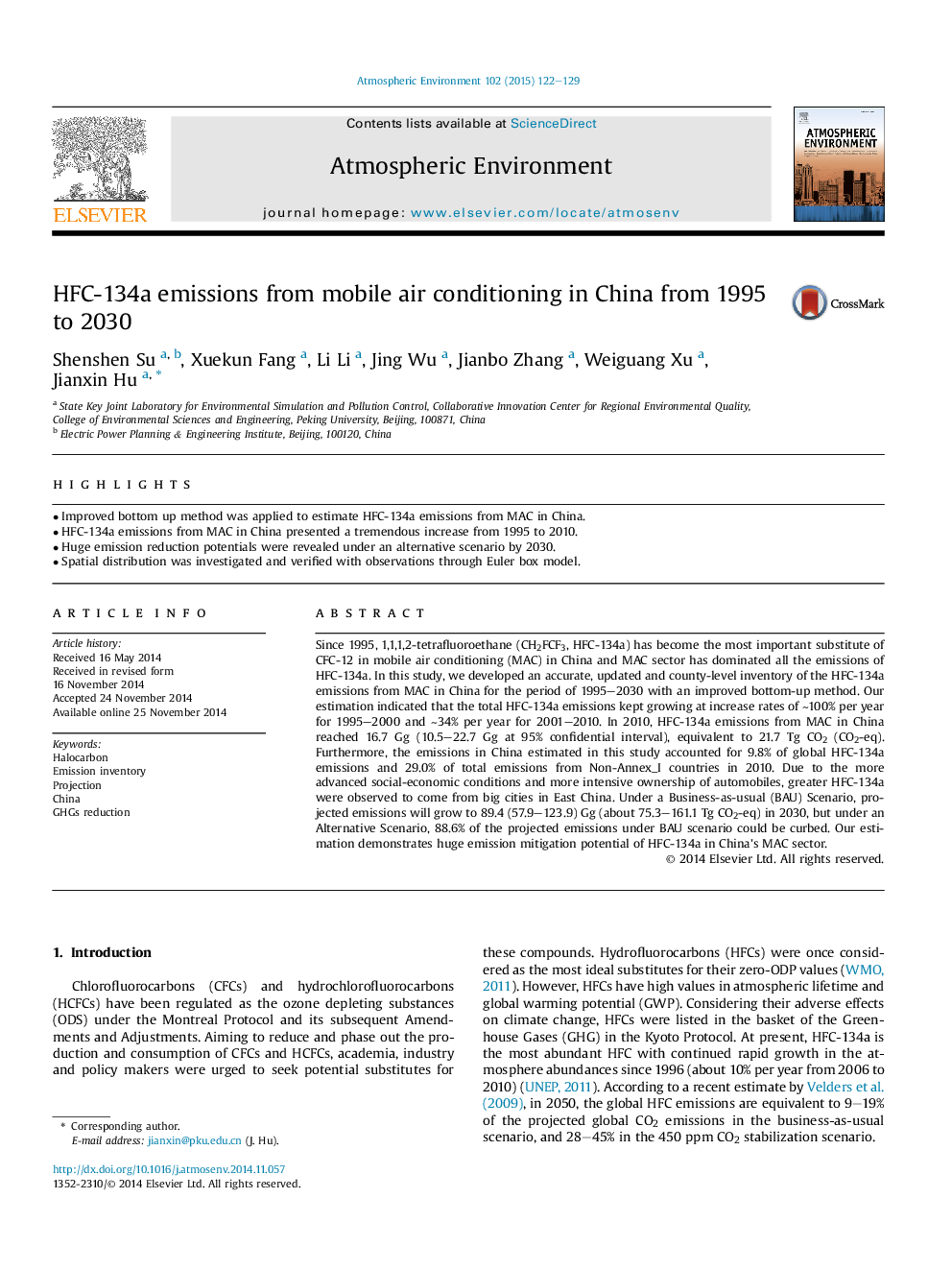| Article ID | Journal | Published Year | Pages | File Type |
|---|---|---|---|---|
| 6338837 | Atmospheric Environment | 2015 | 8 Pages |
Abstract
Since 1995, 1,1,1,2-tetrafluoroethane (CH2FCF3, HFC-134a) has become the most important substitute of CFC-12 in mobile air conditioning (MAC) in China and MAC sector has dominated all the emissions of HFC-134a. In this study, we developed an accurate, updated and county-level inventory of the HFC-134a emissions from MAC in China for the period of 1995-2030 with an improved bottom-up method. Our estimation indicated that the total HFC-134a emissions kept growing at increase rates of â¼100% per year for 1995-2000 and â¼34% per year for 2001-2010. In 2010, HFC-134a emissions from MAC in China reached 16.7 Gg (10.5-22.7 Gg at 95% confidential interval), equivalent to 21.7 Tg CO2 (CO2-eq). Furthermore, the emissions in China estimated in this study accounted for 9.8% of global HFC-134a emissions and 29.0% of total emissions from Non-Annex_I countries in 2010. Due to the more advanced social-economic conditions and more intensive ownership of automobiles, greater HFC-134a were observed to come from big cities in East China. Under a Business-as-usual (BAU) Scenario, projected emissions will grow to 89.4 (57.9-123.9) Gg (about 75.3-161.1 Tg CO2-eq) in 2030, but under an Alternative Scenario, 88.6% of the projected emissions under BAU scenario could be curbed. Our estimation demonstrates huge emission mitigation potential of HFC-134a in China's MAC sector.
Related Topics
Physical Sciences and Engineering
Earth and Planetary Sciences
Atmospheric Science
Authors
Shenshen Su, Xuekun Fang, Li Li, Jing Wu, Jianbo Zhang, Weiguang Xu, Jianxin Hu,
